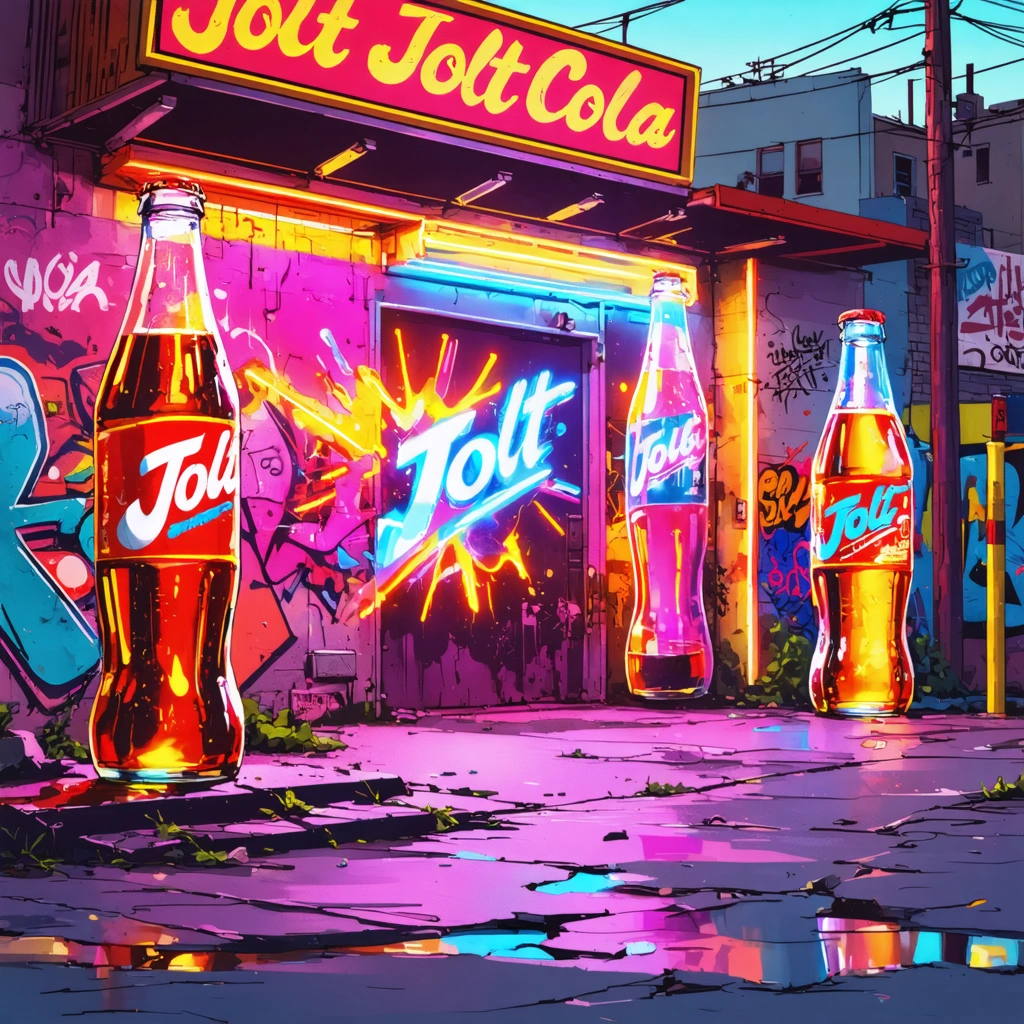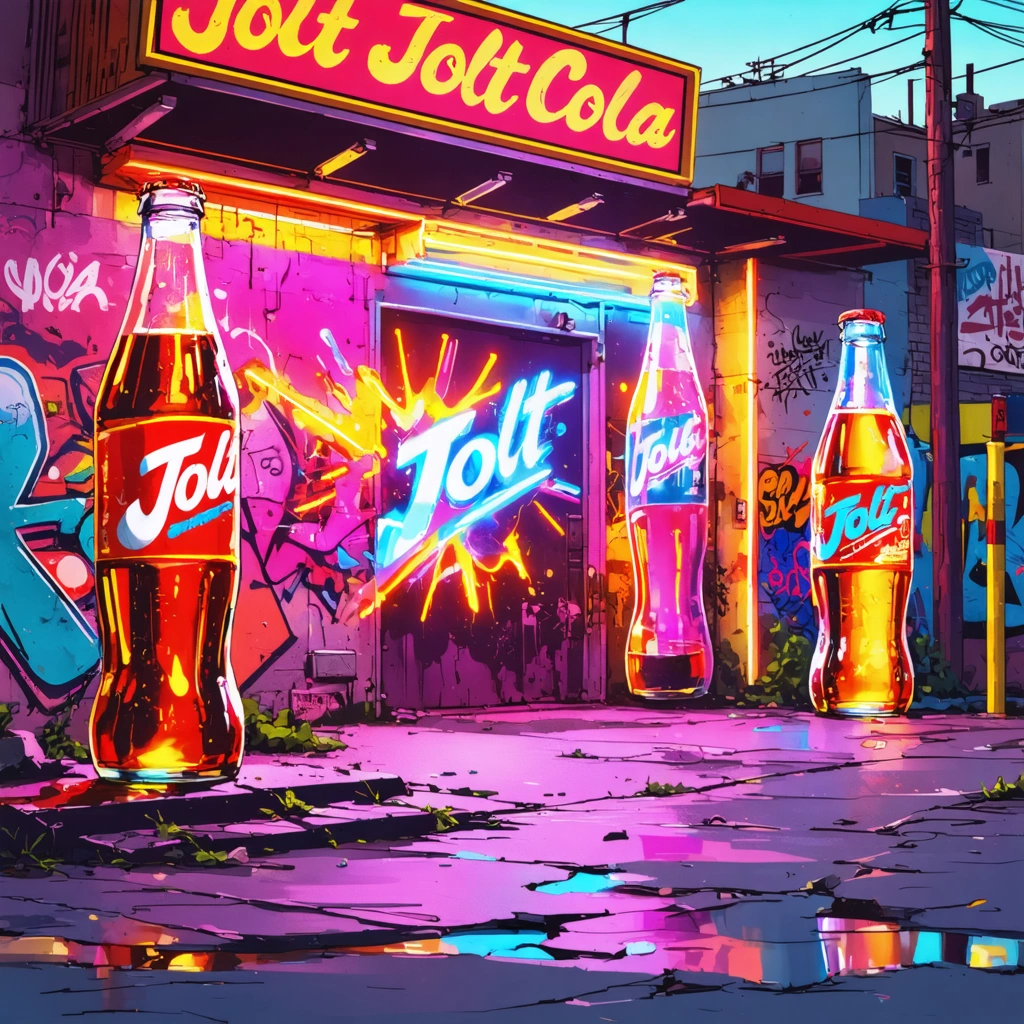The Nostalgic Marketing of Jolt Cola: Jolt Cola’s bold campaigns revive 90s energy drink nostalgia for modern audiences.

When a Classic Comes Back to Life: The Rise, Fall, and Resurrection of Jolt Cola
Remember the days when energy drinks were more than just a quick caffeine fix—they were a cultural statement? In the 90s, Jolt Cola wasn’t just another soda on the shelf; it was an outrageous symbol of hyper-caffeinated rebellion. If you grew up in that decade, chances are you’ve heard of Jolt soda, the iconic “twice the caffeine” drink that dared to be different. But times changed, tastes shifted, and Jolt Cola faded from the spotlight. Fast forward to today, and suddenly you’re seeing “Jolt Cola for sale” signs pop up again, sparking a wave of curiosity: where can I find this vintage energy blast? The modern consumer is asking, “Jolt Cola where to buy?” and even those curious about global availability might be searching “Jolt Cola köpa” to snag a taste abroad.
Yet, the story of Jolt Cola isn’t just about a fizzy beverage making a comeback. It embodies a larger cultural pulse—nostalgia marketing. This technique taps into fond memories and vintage vibes, turning past icons into present-day sensations. But why does Jolt Cola’s revival resonate so deeply now? What’s behind the bold campaigns that reintroduce this caffeine-packed relic to a generation that never experienced its original buzz? And how does a brand with a controversial history—some even whisper about “Jolt Cola death” incidents—navigate a careful balance between edgy appeal and safety concerns in today’s health-conscious market?
From Electric Buzz to Modern-Day Marketing: Why Jolt Cola’s Comeback Matters
The surge of nostalgia in marketing is no accident. Consumers today crave authenticity and emotional connection, especially with brands that defined their youth or that of their parents. Jolt Cola’s reemergence isn’t a mere re-release; it’s a carefully orchestrated campaign designed to evoke the raw energy and rebellious spirit of the 90s, while appealing to new audiences who associate “Jolt drink” with boldness and innovation.
But bringing back a brand like Jolt Cola isn’t without its challenges. The energy drink landscape is crowded and competitive, and Jolt’s infamous reputation—partly fueled by urban legends about “Jolt Cola death”—means marketers must tread cautiously. Still, the brand’s audacity in advertising, combined with a wave of retro trends, has created a fertile ground for its revival. From social media teasers to limited-edition packaging, the campaigns lean heavily into nostalgia, blending vintage aesthetics with contemporary flair. These efforts don’t just ask consumers to remember Jolt Cola—they invite them to experience it anew, to feel that rush of caffeine-fueled excitement that defined a generation.
So if you’re wondering, “Where can I buy Jolt Cola?” or “Is Jolt Cola still available?” the answer is increasingly “yes.” Whether you’re searching online for Jolt Cola for sale or exploring international markets with queries like “Jolt Cola köpa,” the drink is carving out a niche once again. This article will dive deep into the strategies behind Jolt Cola’s nostalgic marketing, the cultural significance of its comeback, and what this means for both longtime fans and curious newcomers.

The Nostalgic Marketing of Jolt Cola: Reviving 90s Energy Drink Culture
What is the story behind Jolt Cola’s nostalgic marketing campaigns?
Jolt Cola’s nostalgic marketing strategy taps into the cultural zeitgeist of the 1990s, a period when energy drinks began to surge in popularity as a bold alternative to traditional sodas and coffee. Originally launched in 1985, Jolt Cola was known for its high caffeine content—twice that of regular colas—making it a favorite among students, gamers, and night-shift workers. The brand’s recent campaigns aim to rekindle this iconic 90s energy drink vibe by leveraging retro packaging, vintage advertising aesthetics, and references to 90s pop culture.
This approach resonates strongly with millennials and Gen Z consumers who either grew up during that era or idealize it. By invoking nostalgia, Jolt Cola not only differentiates itself in a saturated market but also creates an emotional connection that encourages brand loyalty and social sharing.
How does Jolt Cola’s marketing connect with modern audiences?
Jolt Cola’s campaigns cleverly blend nostalgia with contemporary trends. For example, they use social media platforms like Instagram and TikTok to showcase their retro branding alongside modern influencers and meme culture. This fusion introduces Jolt soda to younger consumers who may not have been familiar with the brand before.
Additionally, Jolt Cola’s marketing highlights the product’s original selling point—the high caffeine content—positioning it as a “throwback” energy drink with authentic 90s roots. This authenticity appeals to energy drink enthusiasts seeking variety beyond mainstream options like Red Bull or Monster.
Some key strategies include:
- Reintroducing classic logos and packaging designs to evoke nostalgia.
- Collaborations with retro-themed events, gaming conventions, and music festivals.
- Limited-edition releases that celebrate 90s pop culture icons.
- Engaging storytelling through blog posts and videos about the brand’s history.
Where can I find Jolt Cola for sale today?
With the resurgence of interest, Jolt Cola for sale has become increasingly accessible both online and in select retail locations. While it once struggled with availability due to fluctuating production, the brand’s revival has led to broader distribution. Customers seeking Jolt cola where to buy options can explore the following channels:
- Official Jolt Cola website: Often the best source for limited editions and bulk purchases.
- Major online retailers: Amazon and specialty beverage sites frequently stock Jolt soda.
- Local convenience stores and supermarkets: Particularly those with a retro or niche beverage selection.
- International options: For Swedish speakers, searching “jolt cola köpa” can help locate European distributors or specialty importers.
Because availability can vary by region, checking online stock or contacting local retailers directly is advised for the most current purchasing information.
Is there any truth to the rumors about Jolt Cola death?
The phrase “jolt cola death” has circulated online, often as a sensationalized myth linked to the drink’s high caffeine content. It’s important to clarify that no credible evidence supports claims that Jolt Cola has directly caused death. The original Jolt drink was marketed for its double caffeine content, leading to some health concerns and regulatory scrutiny, but no fatal incidents have been officially attributed to its consumption.
Like any caffeinated product, moderation is key. Excessive intake of caffeine, whether from Jolt soda or other sources, can lead to health issues such as increased heart rate, anxiety, or insomnia. Consumers should always be mindful of their caffeine consumption and consult health professionals if they have concerns.
What makes Jolt Cola distinct from other energy drinks?
Jolt Cola differentiates itself through its unique blend of classic cola flavor combined with high caffeine content. Unlike many modern energy drinks that emphasize exotic ingredients, vitamins, or sugar-free options, Jolt stays true to a simple, straightforward formula that echoes its 90s roots.
Key distinctions include:
- Twice the caffeine: Approximately 71 mg per 12 oz can, compared to around 34 mg in standard colas.
- Retro branding: Iconic lightning bolt logo and vintage-style cans.
- Flavor profile: Classic cola taste with a crisp, sweet finish.
- Affordability: Typically priced lower than premium energy drinks, appealing to budget-conscious consumers.
Why has Jolt Cola experienced a resurgence in popularity?
The resurgence of Jolt Cola is part of a broader trend where brands tap into nostalgia to connect with consumers. This phenomenon is driven by several factors:
- Nostalgia marketing effectiveness: Research shows that nostalgia can evoke positive emotions, increase perceived value, and boost purchase intent.
- Retro culture revival: The 90s aesthetic has become popular in fashion, music, and media, influencing beverage choices.
- Demand for authentic experiences: Consumers seek genuine brand stories, and Jolt’s history offers a compelling narrative.
- Energy drink market expansion: As competition grows, unique niche products like Jolt Cola attract segments looking for alternatives.
By embracing its roots and innovating marketing tactics, Jolt Cola successfully bridges the gap between past and present, creating a loyal following among diverse age groups.




